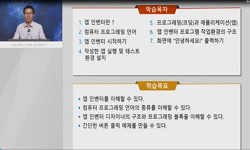This paper presents a Bluetooth and pedestrian dead reckoning (PDR)-based indoor fusion localization approach (BtPDR) using smartphones. A Bluetooth and PDR-based indoor fusion localization approach can localize the initial position of a smartphone wi...
http://chineseinput.net/에서 pinyin(병음)방식으로 중국어를 변환할 수 있습니다.
변환된 중국어를 복사하여 사용하시면 됩니다.
- 中文 을 입력하시려면 zhongwen을 입력하시고 space를누르시면됩니다.
- 北京 을 입력하시려면 beijing을 입력하시고 space를 누르시면 됩니다.



BtPDR: Bluetooth and PDR-Based Indoor Fusion Localization Using Smartphones = BtPDR: Bluetooth and PDR-Based Indoor Fusion Localization Using Smartphones
한글로보기https://www.riss.kr/link?id=A105558286
-
저자
( Yingbiao Yao ) (Hangzhou Dianzi University, China) ; ( Qiaojing Bao ) (Hangzhou Dianzi University) ; ( Qi Han ) (Hangzhou Dianzi University) ; ( Ruili Yao ) (Hangzhou Dianzi University) ; ( Xiaorong Xu ) (Hangzhou Dianzi University, China) ; ( Junrong Yan ) (Hangzhou Dianzi University)

- 발행기관
- 학술지명
- 권호사항
-
발행연도
2018
-
작성언어
Korean
- 주제어
-
등재정보
KCI등재,SCIE,SCOPUS
-
자료형태
학술저널
- 발행기관 URL
-
수록면
3657-3682(26쪽)
-
KCI 피인용횟수
1
- DOI식별코드
- 제공처
-
0
상세조회 -
0
다운로드
부가정보
다국어 초록 (Multilingual Abstract)
This paper presents a Bluetooth and pedestrian dead reckoning (PDR)-based indoor fusion localization approach (BtPDR) using smartphones. A Bluetooth and PDR-based indoor fusion localization approach can localize the initial position of a smartphone with the received signal strength (RSS) of Bluetooth. While a smartphone is moving, BtPDR can track its position by fusing the localization results of PDR and Bluetooth RSS. In addition, BtPDR can adaptively modify the parameters of PDR. The contributions of BtPDR include: a Bluetooth RSS-based Probabilistic Voting (BRPV) localization mechanism, a probabilistic voting-based Bluetooth RSS and PDR fusion method, and a heuristic search approach for reducing the complexity of BRPV. The experiment results in a real scene show that the average positioning error is < 2m, which is considered adequate for indoor location-based service applications. Moreover, compared to the traditional PDR method, BtPDR improves the location accuracy by 42.6%, on average. Compared to state-of-the-art Wireless Local Area Network (WLAN) fingerprint + PDR-based fusion indoor localization approaches, BtPDR has better positioning accuracy and does not need the same offline workload as a fingerprint algorithm.
참고문헌 (Reference)
1 Rai A, "Zee: zero-effort crowdsourcing for indoor localization" 293-304, 2012
2 Wuk Kim, "The interior-point method for an optimal treatment of bias in trilateration location" 55 (55): 1291-1301, 2006
3 Chenshu Wu, "Smartphones Based Crowdsourcing for Indoor Localization" 14 (14): 444-457, 2015
4 Wonho Kang, "SmartPDR: Smartphone-Based Pedestrian Dead Reckoning for Indoor Localization" 15 (15): 2906-2917, 2015
5 Sichun Wang, "Received Signal Strength-Based Emitter Geolocation Using an Iterative Maximum Likelihood Approach" 68-72, 2013
6 A. Fink, "Radio-based human tracking for large indoor environments using distributed centroid location estimation" 442-449, 2013
7 Z Fang, "RSSI variability characterization and calibration method in wireless sensor network" 1532-1537, 2010
8 F. Yin, "RSS-based sensor network localization in contaminated Gaussian measurement noise" 121-124, 2013
9 Fang S H, "Principal component localization in indoor WLAN environments" 11 (11): 100-110, 2012
10 Zuwei Yin, "Peer-to-Peer Indoor Navigation using Smartphones" 35 (35): 1141-1153, 2017
1 Rai A, "Zee: zero-effort crowdsourcing for indoor localization" 293-304, 2012
2 Wuk Kim, "The interior-point method for an optimal treatment of bias in trilateration location" 55 (55): 1291-1301, 2006
3 Chenshu Wu, "Smartphones Based Crowdsourcing for Indoor Localization" 14 (14): 444-457, 2015
4 Wonho Kang, "SmartPDR: Smartphone-Based Pedestrian Dead Reckoning for Indoor Localization" 15 (15): 2906-2917, 2015
5 Sichun Wang, "Received Signal Strength-Based Emitter Geolocation Using an Iterative Maximum Likelihood Approach" 68-72, 2013
6 A. Fink, "Radio-based human tracking for large indoor environments using distributed centroid location estimation" 442-449, 2013
7 Z Fang, "RSSI variability characterization and calibration method in wireless sensor network" 1532-1537, 2010
8 F. Yin, "RSS-based sensor network localization in contaminated Gaussian measurement noise" 121-124, 2013
9 Fang S H, "Principal component localization in indoor WLAN environments" 11 (11): 100-110, 2012
10 Zuwei Yin, "Peer-to-Peer Indoor Navigation using Smartphones" 35 (35): 1141-1153, 2017
11 A. Ryu, "Non-GPS positioning sensor network in social manufacturing" 47-52, 2016
12 C C Pu, "Mitigation of multipath fading effcts to improve indoor RSSI performance" 8 (8): 1884-1886, 2008
13 Waadt A E, "Maximum likelihood localization estimation based on received signal strength" IEEE 1-5, 2010
14 Liu Y, "Location, localization, and localizability" 25 (25): 274-297, 2010
15 Yohan Chon, "LifeMap: A Smartphone-Based Context Provider for Location-Based Services" 10 (10): 58-67, 2011
16 Lyu-Han Chen, "Intelligent Fusion of Wi-Fi and Inertial Sensor-Based Positioning Systems for Indoor Pedestrian Navigation" 14 (14): 4034-4042, 2014
17 Bonhyun Koo, "Integrated PDR/fingerprinting indoor location tracking with outdated radio map" 1-5, 2014
18 Au W S A, "Indoor tracking and navigation using received signal strength and compressive sensing on a mobile device" 12 (12): 2050-2062, 2013
19 Fard H K, "Indoor positioning of mobile devices with agile iBeacon deployment" 275-279, 2015
20 Radu V, "HiMLoc: Indoor smartphone localization via activity aware Pedestrian Dead Reckoning with selective crowdsourced WiFi fingerprinting" 1-10, 2013
21 V Daiya, "Experimental analysis of RSSI for distance and position estimation" 1093-1098, 2011
22 Gentile, "Distributed sensor location through linear programming with triangle inequality constraints" 4020-4027, 2006
23 Perttula A, "Distributed Indoor Positioning System With Inertial Measurements and Map Matching" 63 (63): 2682-2695, 2014
24 Kaishun Wu, "CSI-Based Indoor Localization" 24 (24): 1300-1309, 2013
25 ZHAO Yongxiang, "Application of Kalman Filter in Indoor Positioning System for Real -Time Tracking" 25 (25): 696-700, 2009
26 Harle R, "A survey of indoor inertial positioning systems for pedestrians" 15 (15): 1281-1293, 2013
27 Z. Hui-Qing, "A new indoor location technology using back propagation neural network and improved centroid algorithm" 5460-5463, 2012
28 Jimenez A.R, "A comparison of Pedestrian Dead-Reckoning algorithms using a low-cost MEMS IMU" 37-42, 2009
29 Luan V N, "A Human Foot Motion Localization Algorithm Using IMU" 4379-4384, 2016
30 L. Zhang, "A Comprehensive Study of Bluetooth Fingerprinting-Based Algorithms for Localization" 300-305, 2013
동일학술지(권/호) 다른 논문
-
Text Mining and Sentiment Analysis for Predicting Box Office Success
- 한국인터넷정보학회
- ( Yoosin Kim )
- 2018
- KCI등재,SCIE,SCOPUS
-
Improved Hybrid Symbiotic Organism Search Task-Scheduling Algorithm for Cloud Computing
- 한국인터넷정보학회
- ( Songil Choe )
- 2018
- KCI등재,SCIE,SCOPUS
-
- 한국인터넷정보학회
- ( Jun Zhan )
- 2018
- KCI등재,SCIE,SCOPUS
-
Feasibility of Societal Model for Securing Internet of Things
- 한국인터넷정보학회
- ( Hiroshi Tsunoda )
- 2018
- KCI등재,SCIE,SCOPUS
분석정보
인용정보 인용지수 설명보기
학술지 이력
| 연월일 | 이력구분 | 이력상세 | 등재구분 |
|---|---|---|---|
| 학술지등록 | 한글명 : KSII Transactions on Internet and Information Systems 외국어명 : KSII Transactions on Internet and Information Systems | ||
| 2023 | 평가예정 | 해외DB학술지평가 신청대상 (해외등재 학술지 평가) | |
| 2020-01-01 | 평가 | 등재학술지 유지 (해외등재 학술지 평가) |  |
| 2013-10-01 | 평가 | 등재학술지 선정 (기타) |  |
| 2011-01-01 | 평가 | 등재후보학술지 유지 (기타) |  |
| 2009-01-01 | 평가 | SCOPUS 등재 (신규평가) |  |
학술지 인용정보
| 기준연도 | WOS-KCI 통합IF(2년) | KCIF(2년) | KCIF(3년) |
|---|---|---|---|
| 2016 | 0.45 | 0.21 | 0.37 |
| KCIF(4년) | KCIF(5년) | 중심성지수(3년) | 즉시성지수 |
| 0.32 | 0.29 | 0.244 | 0.03 |




 ScienceON
ScienceON KISS
KISS



